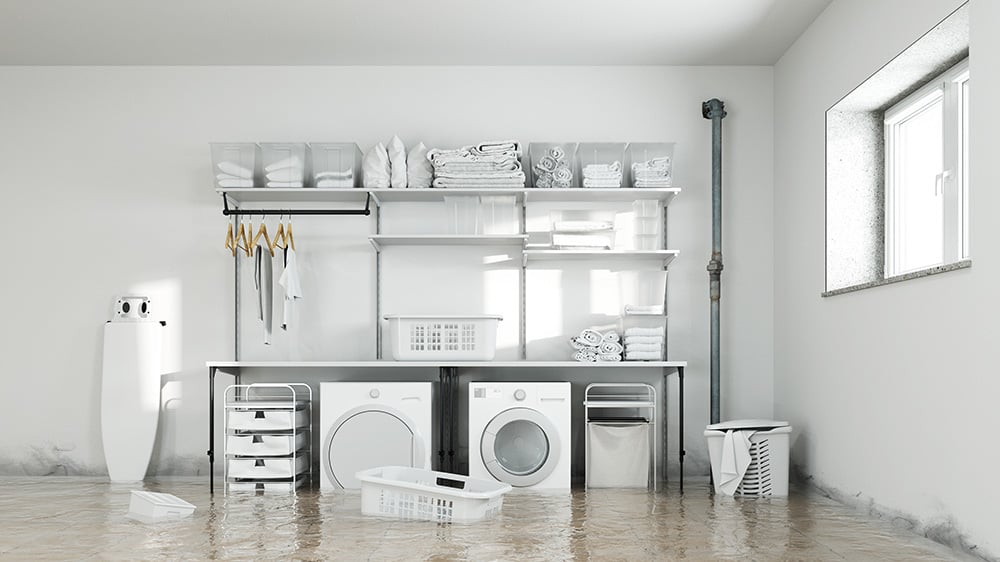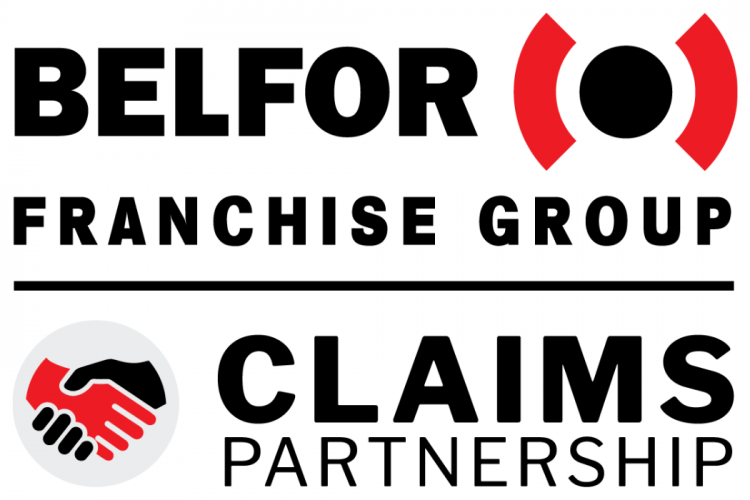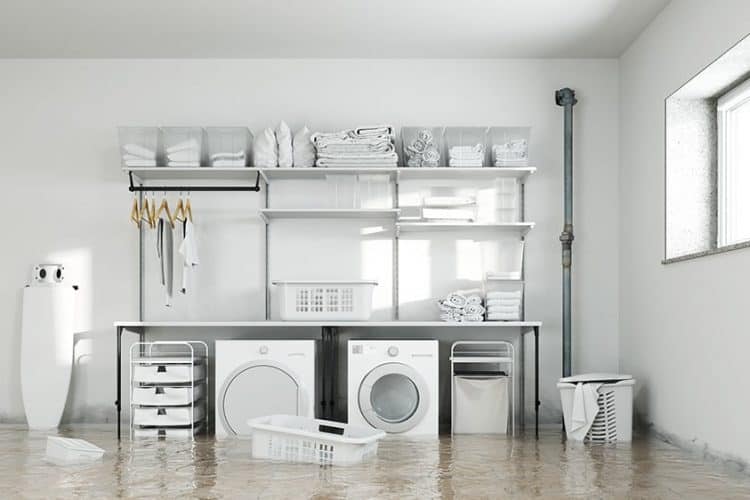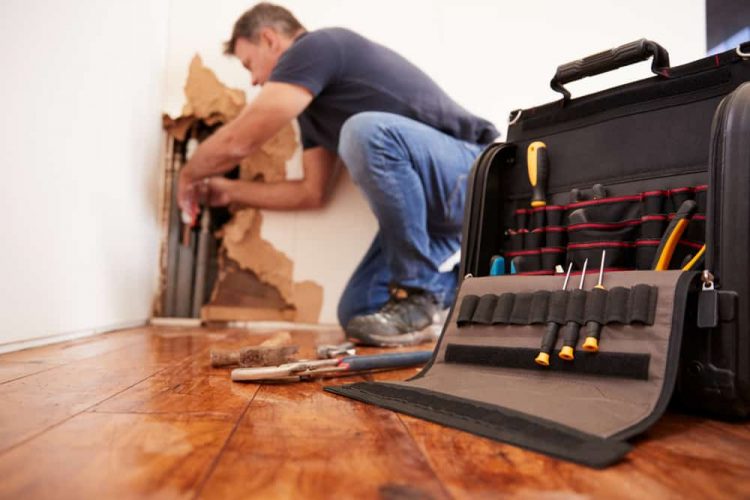
According to FEMA’s National Flood Insurance Program, just one inch of floodwater can cause up to $25,000 in damage. As water runs downhill, basement flooding can be a major issue for a homeowner. In addition to the water, you also have the potential for mold growth and damage, so handling a basement water damage cleanup is important for maintaining a healthy home.
Here is a guide on how to assess and address basement water damage.
Evaluate the situation
Before you start removing water and securing valuables, you first need to evaluate the situation you’re dealing with to ensure the safety of everyone in your home and to deal with your basement flooding problem most efficiently.
Shut off power and gas supply
Water conducts electricity, so before you enter a flooded basement, you need to ensure it’s safe. Even with minimal water, you should shut off your power and gas supply as a precaution. Call your power provider if you cannot safely reach your breaker. Many electrical outlets are located near the bottom of the wall, and even if the water hasn’t reached that level from what you can see, the water could be interacting with the outlets behind the drywall, which you cannot see.
Safety is paramount
For water that’s more than a foot deep, your risk of electrocution is higher and you need to call a professional who specializes in flood remediation. You can call 1-800 WATER DAMAGE’s 24/7 emergency service at 1-800-928-3732.
If the water is 1-2 inches in depth, you can probably enter the basement safely. However, it’s a good idea to have a professional company on standby in case the situation becomes more than you can handle on your own.
Identify the source of the water problem
There are many possible sources of a water leak, and you can narrow down the list by evaluating what kind of water you’re dealing with. Generally, seepage will produce small amounts of (mostly) clean water while sewer backups will produce larger amounts of dirty and smelly water.
- Water seepage. This is water that slowly enters the basement through cracks. These can be cracks in the foundation, walls, around basement windows, or where pipes and HVAC conduits penetrate basement walls. Any water entering your property from a source other than a fresh water source should be considered contaminated and handled with caution.
- Sump pump malfunction. When your sump pump fails, your basement experiences water damage due to an overflow of water that would normally have exited through your sump pump drainage system.
- Sewer backups. If you have this kind of water problem in your basement, it will result in a large amount of water accumulating in a short time, which can be accelerated by heavy rainfall. Both storm sewer systems and sanitary sewer systems can backup and lead to basement flooding. Storm sewage usually enters through floor drains while sanitary sewage, which includes wastewater, will come through plumbing drains (utility sinks, toilets, etc.) Sanitary sewage will also have an odor to it.
NOTE: The U.S. EPA recommends that if the water and/or mold damage was caused by sewage or another contaminated water source, you should call in a professional who has experience cleaning and remediating buildings damaged by contaminated water.
Understanding your insurance coverage
We highly recommend that you review your insurance policy to ensure that you fully understand and are comfortable with the coverage details knowing that your property could be affected by unexpected water damage or a flood-related event. Before starting any work, it’s very important to take photos of the situation as many insurance companies require proper photo documentation to consider covering restoration costs.
DIY or call a professional service
At this point, you might have a good idea of whether the basement flooding is something you can manage yourself, or if there are too many uncertainties that might be best handled by a professional service. Your insurance coverage may also dictate how you should move forward. Be sure to consider your capability of not only removing the water but also thoroughly cleaning an sanitizing the basement to prevent the spread of mold.
The water removal process
Whether you’re dealing with clean or contaminated water, you’ll still have to remove water from your basement. Clean-water floods in basements typically result from a broken pipe or appliance malfunction, and are the simplest to cleanup. Here are some steps to follow to remove clean water from your basement:
- Use a wet vacuum or water pump to pull out all the excess water.
- Remove all porous materials such as carpets, rugs, books, clothing and furniture. If drywall damage is significant, remove the pieces of drywall that are impacted as well.
- Flush the walls and floors.
- Clean and dry any damp or wet building materials and furnishings within 24-48 hours to prevent mold growth.
- Run fans and a dehumidifier to remove excess moisture in the space and limit the potential for mold growth.
Dirty water removal
In our experience, when a home or building has flooded with contaminatedwater, it’s best to let a professional to handle the cleanup. There are just too many factors to manage when it comes to the safety of water extraction and the cleaning and sanitizing of the property. Homeowners do not have the same knowledge, equipment, or product access as water damage restoration specialists who are trained for flooded basement cleanup work and will ensure all contamination issues are thoroughly addressed.
General water damage prevention tips
There are some things you can do to help prevent water damage in the basement from occurring.
Inside your home
Regular home maintenance is a preventative measure that all homeowners can take to guard against basement flooding situations. Inside the home, control dampness and odors by running a dehumidifier. Ensure all areas of your home are well-vented and that you have good airflow. This is especially important in basements that often lack the airflow of other areas of the home. Ensure any older pipes, your sump pump, and seals around toilets and sinks are not in disrepair and make any replacements as needed. Attend to any foundation or wall cracks in the basement. Inspect and maintain sump, ejector, and water elimination pumps.
Outside your home
Be sure to channel rainwater away from your home’s foundation by using gutters, downspouts, and proper grading. Gutters need to be cleaned regularly to remove leaves and debris that could block a consistent flow of water away from the home. Downspouts should be releasing water at least six feet away from the home.
Inspect the exterior of your windows for any damage to frames and seals that could allow rainwater to seep in and accumulate damage over time.
You can also improve the drainage of rainwater away from your home with sloping and landscaping. In the winter, you can ensure snow does not build up close to the home’s foundation.
The value of basement flooding experts
At 1-800 WATER DAMAGE, we’re trained and certified according to the Institute of Inspection Cleaning and Restoration Certification (IICRC) industry standards, and we follow their most up-to-date procedures for safe and effective cleaning and sanitization.
A professional restoration service can give you peace of mind that the water damage is remediated and mold growth is prevented. The technicians at 1-800 WATER DAMAGE also know how to investigate areas that may not appear to be but actually are contributing to or causing water damage issues, which can prevent or limit the damage of a major flooding situation in the future.
Contact 1-800 WATER DAMAGE today
1-800 WATER DAMAGE offers a 24/7 emergency service for flood damage restoration. Call 1-800-928-3732. If you are not in an emergency situation, you can submit our online form to request service.



